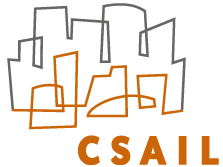Overview of Project-PavLab
Maintained by: mikerb@mit.edu  Get PDF
Get PDF
1 Project-PavLab Overview
1.1 If you're writing MOOS apps or any other software
1.2 If you're writing a thesis or publishing work in the group
1.3 If you're involved in collecting data/media during group work
2 Structure of the Project-PavLab Repository
2.1 Getting the Project-PavLab Tree (With R/W Access)
2.2 Getting the Project-PavLab Tree (Anonymous Read-Only Access)
2.3 building the Project-PavLab Utilities
3 Writing documents, using LaTex and using texwiki
3.1 How to start a new document - conventions and examples
3.2 Prior to texwiki - just focus on a working LaTex document
3.3 Preparing your document for texwiki
3.4 Going live on the pavlab web page
4 Bibliography Development and the bibfind Utility
1 Project-PavLab Overview
Project-PavLab is a repository on the oceanai server containing a number of tools and files of use to core members of the PavLab/LAMSS group. As a quick view it contains:

Project-PavLab Content:

- Documentation for PavLab MOOS apps, help pages, labs, and memos.
- Bibliography (LaTex .bib) files for PavLab research. And PDFs of papers.
- PavLab software tools for documentation, biblography managment, and archiving.


Project-PavLab Software Tools:

- The TexWiki Toolbox for converting LaTex documents into Wiki page content.
- The DULoad Toolbox for managing and archiving large sets of data files between the oceanai server and the local machines of users.
- The bibfind utility for viewing and searching on contents of one or more LaTex bibliography files.


For members and graduate students working in the lab, the intention is that this folder is checked out on each person's machine, and each person is familiar with the tools.

1.1 If you're writing MOOS apps or any other software [top]
If you are writing software in the group, you are expected to document your work. Not eventually document, but rather as you write the code.

The form of the documentation is LaTex. And in particular a certain basic subset of LaTex that lends itself to translation in the texwiki tool. The tools and structure of project-pavlab, allow you to get started on this quickly with your documents automatically refreshed to the lab wiki page.

Your software contribution to the group is not cemented until your documentation is online. Even (especially) the little tools.


1.2 If you're writing a thesis or publishing work in the group [top]
If you plan to conduct research and write papers in the group, the project-pavlab repository is a good place to store:

- The papers you are reading and plan to cite.
- The BibTex file


It makes perfect sense to compose your documents elsewhere, but the bibliography information and set of papers can be a matter for the group. By keeping papers in this repository it will facilitate group reading and avoid duplication of effort in hunting down citation information.

Although you compose your papers in another folder, hopefully you will utilize a version control system. At the very least just to have your own backup, but also to ease collaboration in the group on jointly authored papers and thesis revisions.


1.3 If you're involved in collecting data/media during group work [top]
If you plan to capture mission log files or other media, such as videos or audio or any other files used by the group, we will do this via the large (as of this date 40TB) drive on the oceanai server. For this the DULoad Toolbox tools should be used, and the raw-file naming scheme should be used.


2 Structure of the Project-PavLab Repository
The project-pavlab tree holds three types of content, documentation, bibliography information, and software utilities:


$ cd project-pavlab/ $ ls appdocs/ <-- docs (software apps) helpdocs/ <-- docs (random help snippets / how-tos) labdocs/ <-- docs (lab exercises / training) memos/ <-- docs (memos like this one) private_docs/ <-- docs (stuff not for sharing yet or ever) biblio/ <-- bibtex info and reading material utils/ <-- software (texwiki, duload, bibfind) clean.sh*



2.1 Getting the Project-PavLab Tree (With R/W Access) [top]
If you are part of the PavLab group with an account on the oceanai server, you can check out the tree with:


$ svn co svn+ssh://oceanai.mit.edu/svn/repos/project-pavlab


If you are part of LAMSS, or the Marine Robotics Group, access to oceanai and this tree is there for the asking. If you have trouble checking out the tree:

- Log on to oceanai via ssh. If you cannot log in, seek help.
- After logging in, verify you belong to the pavlab group, by typing on the command line: groups. If you don't see "pavlab" in the list of groups for your account, then seek help.


If you're able to perform the above two steps, but still cannot checkout the project-pavlab repository, then seek help.


2.2 Getting the Project-PavLab Tree (Anonymous Read-Only Access) [top]
Anonymous read-only access is available to members outside the group, i.e., without access to the oceanai server. This form of access is primary useful to us for auto-updating our web pages with wiki content as the LaTex documents are checked in to the repository. In any event it's good to know that this type of access exits:


$ svn co https://oceanai.mit.edu/svn/project-pavlab-aro


When checked out in this manner, you will only get the below portion of the tree:


$ cd project-pavlab-aro $ ls appdocs/ helpdocs/ labdocs/ memos/




2.3 building the Project-PavLab Utilities [top]
As a lab member, you should check out the version of the tree above with read-write access and with the utils/ sub-directory. You will need to build these utilities. These tools do link against utilities in the moos-ivp repository, which is assumed to be already downloaded and built on your machine. The moos-ivp and project-pavlab trees should be in the same folder.


$ cd project-pavlab/utils $ ./build.sh $ cd bin/ rrf.sh* texwiki_book* bibfind* dload.pl* texwiki* uload.pl*


You should put project-pavlab/utils/bin/ in your shell path.


3 Writing documents, using LaTex and using texwiki
We bin our document types in to four different groups:

- Applications: these describe specific software tools, typically MOOS Apps, but also command line tools and other software.
- Help: these documents are short snippets covering a wide variety of topics often encountered in the lab. Often these topics escape more formal documentation, but may nonetheless be the kind of knowledge repeated over and over between lab members.
- Labs: these documents are designed to guide readers through a sequence of steps and exercises designed to teach or build up a certain skill. For example the C++ mini labs. Or other course labs.
- Memos: All else falls in the memo category. For example this memo.


Of course there are other categories such as thesis documents, and conference or journal papers. But these types of documents are more private as they progress. Typically we encourage users to write their publications or theses in their own folders (project-pavlab would simply get too big!). The exception is that bibliography building is encouraged to be in the project-pavlab/biblio/ folder as described below in Section 4. And of course finished thesis or confernce PDFs should land in the biblio folder as well.

These four document categories, plus the private category, are aptly named directories in project-pavlab, appdocs, helpdocs, labdocs, memos, and private_docs.

3.1 How to start a new document - conventions and examples [top]
The first step to creating a new document is to consider if this falls in the category of documenting an application, help topic, lab or memo. It can always be changed later so don't fret if your document is not clearly in one of these buckets.

There is a naming convention that is important. For example, in the appdocs/ folder, an application called pFooBar would be given a new folder named app_pfoobar. And the LaTex main document in this folder would be called app_pfoobar.tex. Note the directory name and document name are the same except for the .tex suffix. So you will see the following structure:


$ cd project-pavlab/appdocs
$ ls
app_igpssim/
app_igpssim.tex
app_ijoystick/
app_ijoystick.tex
app_im200
app_im200.tex
app_ios5000/
app_ios5000.tex
...


The scripts that convert latex to wiki page content work with the assumption of this naming convention.

A template can be used to get started. In the appdocs/ folder there is an example document, app_pexample. You can begin by copying this folder to create your own document.


3.2 Prior to texwiki - just focus on a working LaTex document [top]
Each document is meant to be built into both a PDF document and a wiki page document. Initially the focus should be just on getting the content into a buildable LaTex document. Some additional tweaking of the LaTex source may be needed later to enable texwiki to work since texwiki works with a subset of the full LaTex capabilities.

Each document folder will typically contain the following:

- A primary LaTex file, e.g., app_pexample.tex
- A makefile
- A figures/ subfolder if your doc has figures.
- A file.bib file if your doc has references.


Your document should build on the command line with:


$ make $ make pdfo <-- on MacOS it will make, and then open the doc in Preview


There are scripts on the pavlab webpage that will automatically re-build your PDF and re-generate the texwiki page when you commit changes to your document to the oceanai repository. These scripts depend on the existence of a makefile that will build the PDF with no arguments to make.

Initially as you are creating your document, it is not included on the pavlab webpage. And no updates are triggered upon commits to the repository. Turning this feature on is described below in Section 3.4.


3.3 Preparing your document for texwiki [top]
The texwiki utility will convert a LaTex document into a wiki page file. Since LaTex is huge, texwiki only works with a subset of LaTex, but it's a fairly expressive subset. For example, this memo document compiles both to LaTex and wiki documents.

If you'd like to check whether your document can be successfully converted to a wiki page, you can invoke texwiki with the --dry-run option:


$ texwiki --dry-run app_pexample.tex PASS


If the result is instead FAIL, you can invoke again with the --verbose or -v option to see the error messages.


3.4 Going live on the pavlab web page [top]
Once you are comfortable posting your document on the pavlab wikipage, the following additional step must be taken. In each of the document directories, appdocs, helpdocs, labdocs, and memos, there is a file: install.txt. Edit this file and add the name of the document to a new line in the file for example:


$ cd project-pavlab/appdocs $ cat install.txt


File: install.txt app_ufld_flagmgr app_ufld_tagmgr app_pmapvalues app_ijoystick app_distcc app_im200 app_ios5000 app_igps_device app_iumodem app_igpssim app_usimm200 app_uspeech_rec app_udialog_mgr app_newdoc <-- Add your line here for example


Note: the name of the main LaTex document does not need to be provided since it is assumed that there is a app_newdoc.tex file in the folder ther app_newdoc.


4 Bibliography Development and the bibfind Utility
The bibfind utility is a tool in the project-pavlab/utils folder and should be built and in your shell path.
rm -f biblio.bib; cat ~/Research/project-pavlab/biblio/*.bib > ./biblio.bib

Page built from LaTeX source using texwiki, developed at MIT. Errata to issues@moos-ivp.org.
 Get PDF
Get PDF



